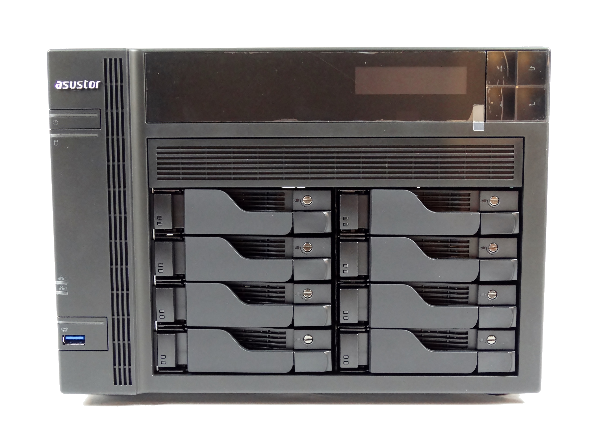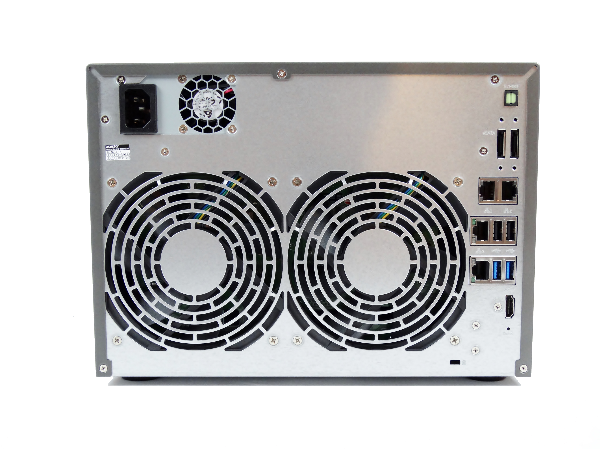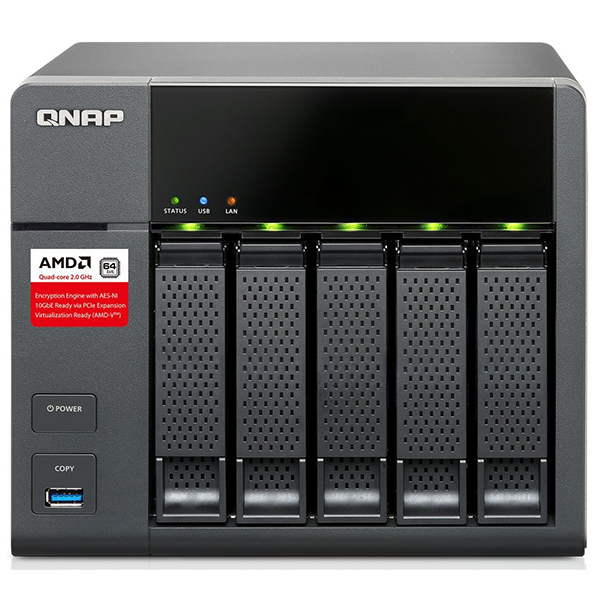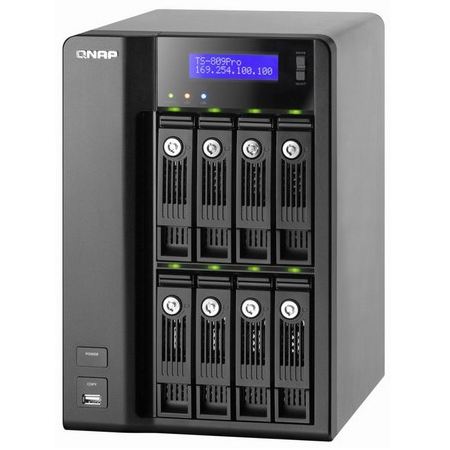Asustor AS5108T NAS Review
The Asustor AS5108T provides high network traffic performance with existing gigabit networks. This model's four Ethernet ports can aggregate for 10GbE-like transfers.
Why you can trust Tom's Hardware
A Closer Look
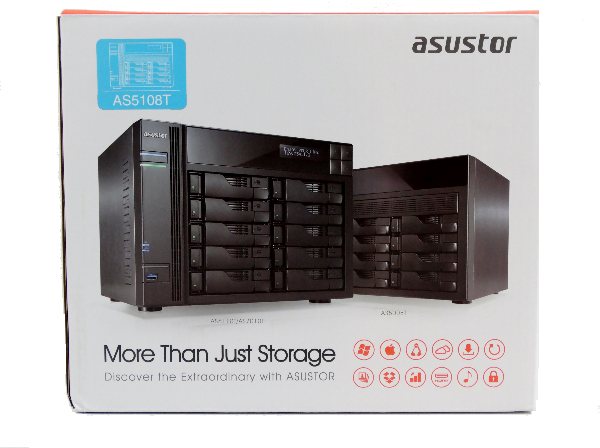
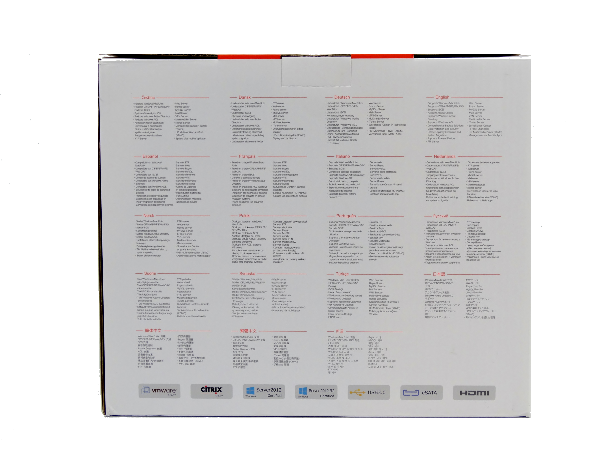
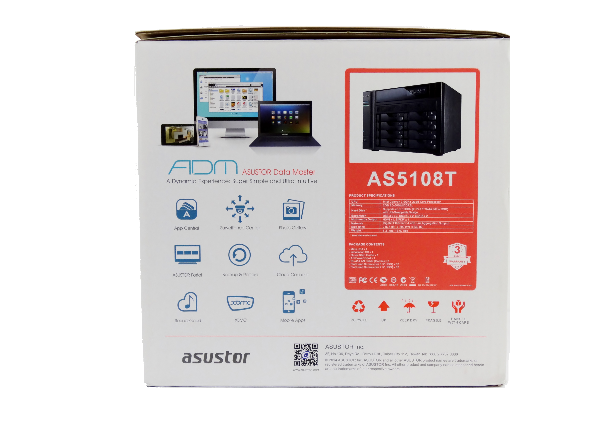
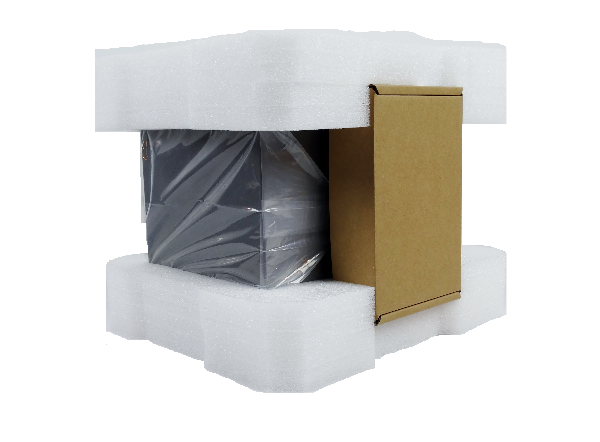
Asustor hasn't tapped into Asus' full distribution channel to get its products onto many retail shelves, but the company's partner list has grown over the last two years. When I first started testing Asustor appliances, they had to be special-ordered. Now it's possible to have one shipped a day after buying it.
Even without widespread retail availability, Asustor still hits high marks for putting the information required for making an informed purchasing decision right on the package. The message on the box, "More than just Storage", is spot-on.
Inside, we found the NAS securely packaged with its accessories in a separate, smaller box. The closed-cell foam is built in layers and dense to absorb any shock from shipping.
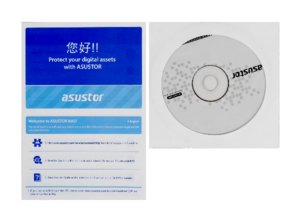

The accessory package is sufficient, though we'd like to see four CAT 5e cables since this system does expose a quartet of gigabit Ethernet ports.
Asustor's eight-bay chassis is identical to the company's 10-bay systems, except for the single cover along the top row of drive bays. Sadly, the SATA ports for the two top bays are not present, so you can't convert the NAS into a 10-bay model. While the cover allows air past, we would prefer a solid piece of plastic to force air over the hard drives.
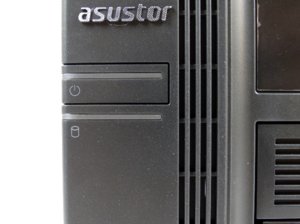
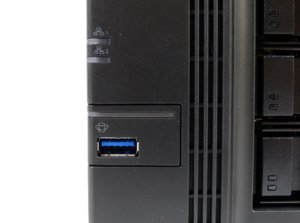
The AS5108T has several indicator lights. The power button sits above a hard disk drive activity LED along the top-left edge. At the bottom-left, there are two network activity LEDs, and just below is a one-touch copy button tied to the USB 3.0 port.

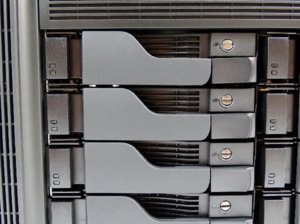
The AS5108T also has a front LCD display with four buttons to the right of it. Use the display's information to configure the NAS, check the system's status and verify other settings. If you don't like the lights at all, you can dim them or shut them off completely.
Get Tom's Hardware's best news and in-depth reviews, straight to your inbox.
Technically, the drive bays are lockable, though just barely. This is one of the AS5108T's weak points. Any slot driver can open the individual drive bay sleds. Really, the locks are less for security and more so you don't accidentally remove a drive. Each bay has two LEDs that shine through a fiber optic system. One shows the presence of a disk and the other conveys activity. If a drive fails, the LED turns red to indicate a fault. These LEDs can also be disabled via software.
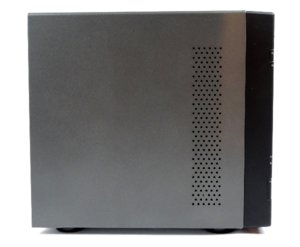

The system board side of the AS5108T is perforated to allow air flow over the processor, chipset and RAM. Three screws on the back of the chassis facilitate easy access for memory upgrades.
There are two 120mm fans that keep air moving through the enclosure, while a small fan up top cools the power supply. Even with those fans spinning, this system is quiet under normal use. The hard drives themselves are louder than the other platform components.
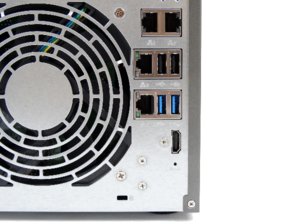
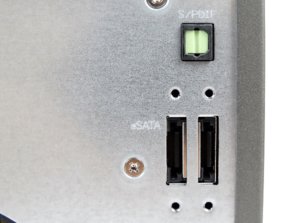
All of the I/O is located on the right side of the chassis' rear panel (except for that USB 3.0 port up front). You get four gigabit Ethernet ports, and there is no option to add 10GbE connectivity. Most SMBs don't have that infrastructure anyway, so we don't see its absence as an issue. If you need lots of performance, team the gigabit Ethernet ports and get a theoretical ~500 MB/s of throughput.
As mentioned, one HDMI port and S/PDIF connectivity address multimedia applications in home theaters. Two eSATA ports facilitate expansion through external add-ons.

Chris Ramseyer was a senior contributing editor for Tom's Hardware. He tested and reviewed consumer storage.
-
SirGCal I didn't see where they mentioned WHO made the NICs.. are they Intel, Realtech, Maxwell, etc? Or some of each? Only that they could be bundled...Reply
Also, was it ECC memory? -
jimmysmitty Reply16843464 said:I didn't see where they mentioned WHO made the NICs.. are they Intel, Realtech, Maxwell, etc? Or some of each? Only that they could be bundled...
Also, was it ECC memory?
I can't find anything stating what NICs they use. I would prefer Intel though.
And it is not ECC RAM. Celerons do not support ECC. Only Xeons do. -
expunged ReplyI didn't see where they mentioned WHO made the NICs.. are they Intel, Realtech, Maxwell, etc? Or some of each? Only that they could be bundled...
Also, was it ECC memory?
non ecc memory "SO-DIMM DDR3"
does not say on nic
more info here
http://www.asustor.com/product?p_id=36&lan=en#tab3 -
DongleKin Reply16843464 said:I didn't see where they mentioned WHO made the NICs.. are they Intel, Realtech, Maxwell, etc? Or some of each? Only that they could be bundled...
Also, was it ECC memory?
I can't find anything stating what NICs they use. I would prefer Intel though.
And it is not ECC RAM. Celerons do not support ECC. Only Xeons do.
There are plenty of non-Xeons that support ECC in Intel's product line. Core i3s, Pentiums, Celeron, Atoms. However, the Celeron J1900 (which is probably in this NAS) does not. -
Aris_Mp In the AS5102T model the pair of NICs is controlled by a couple of Broadcom ICs (BCM5778). This model has 4x Ethernet ports so for the second couple it might use different controllers.Reply
